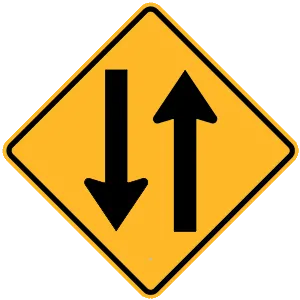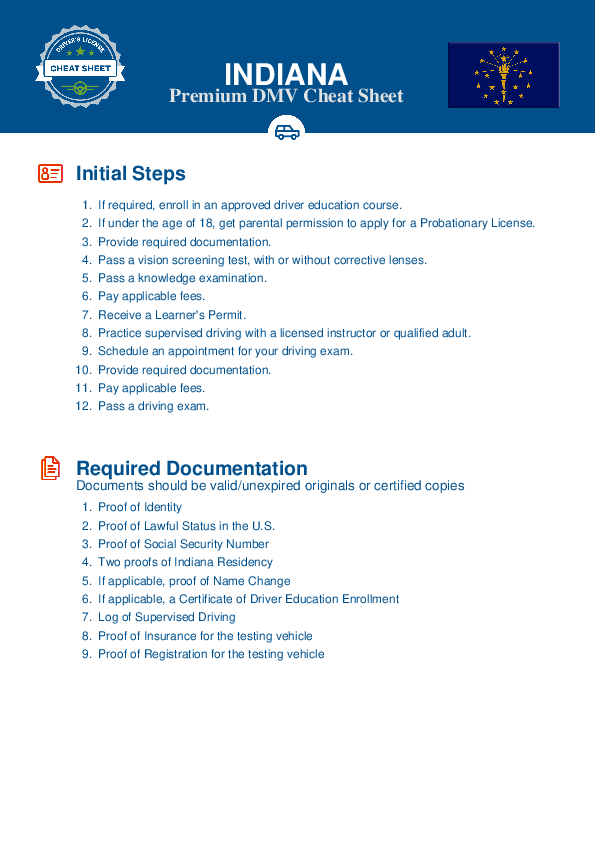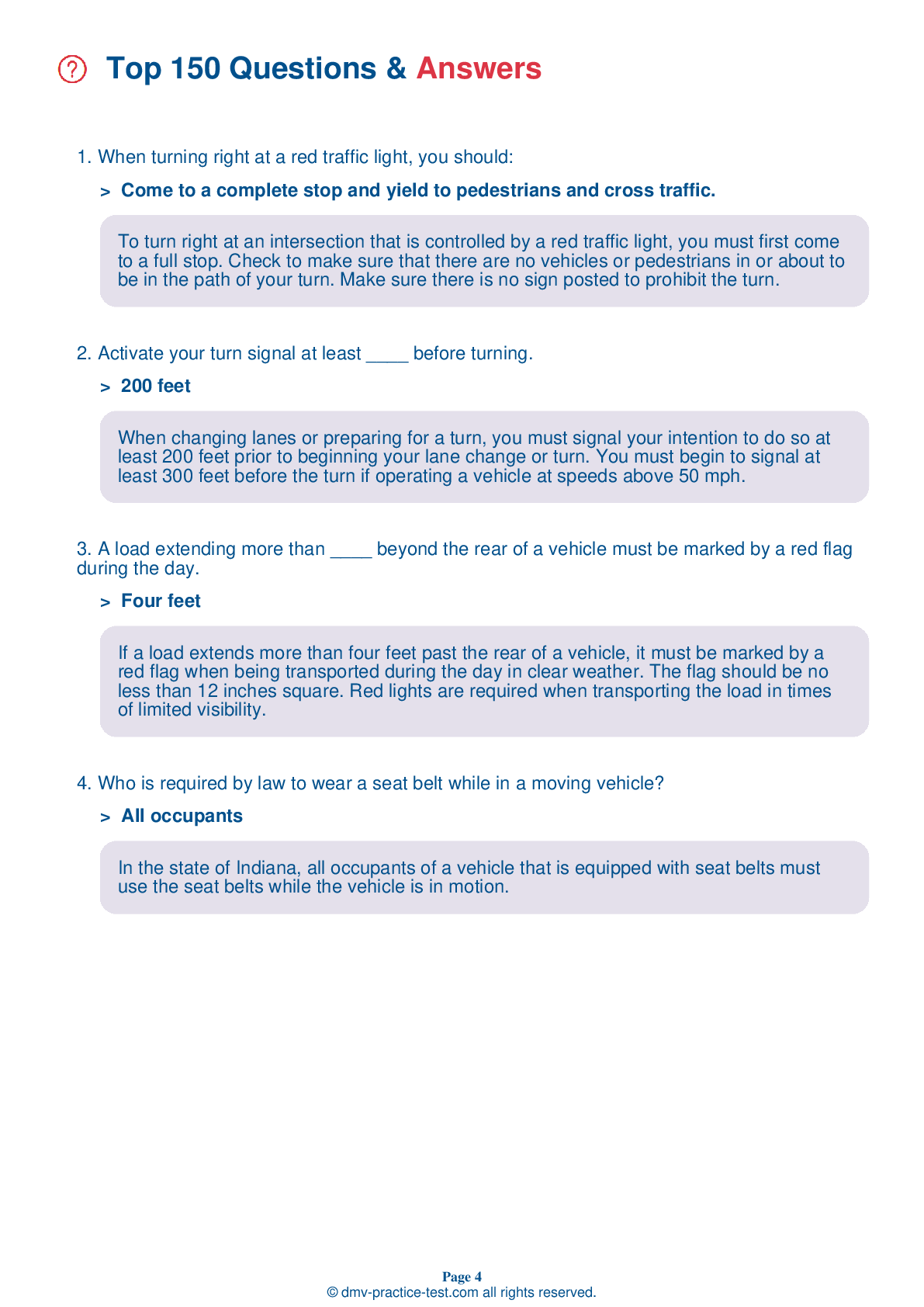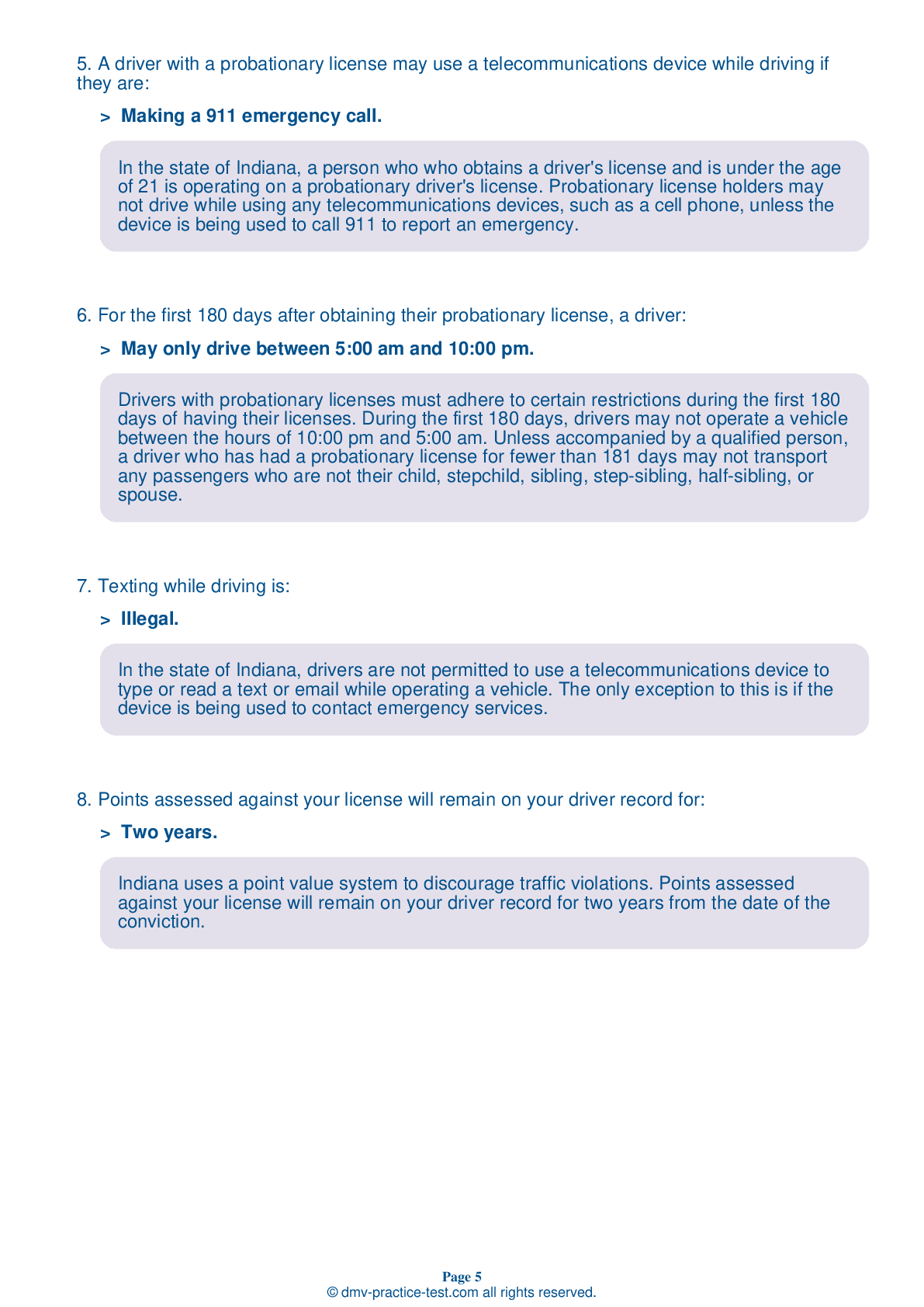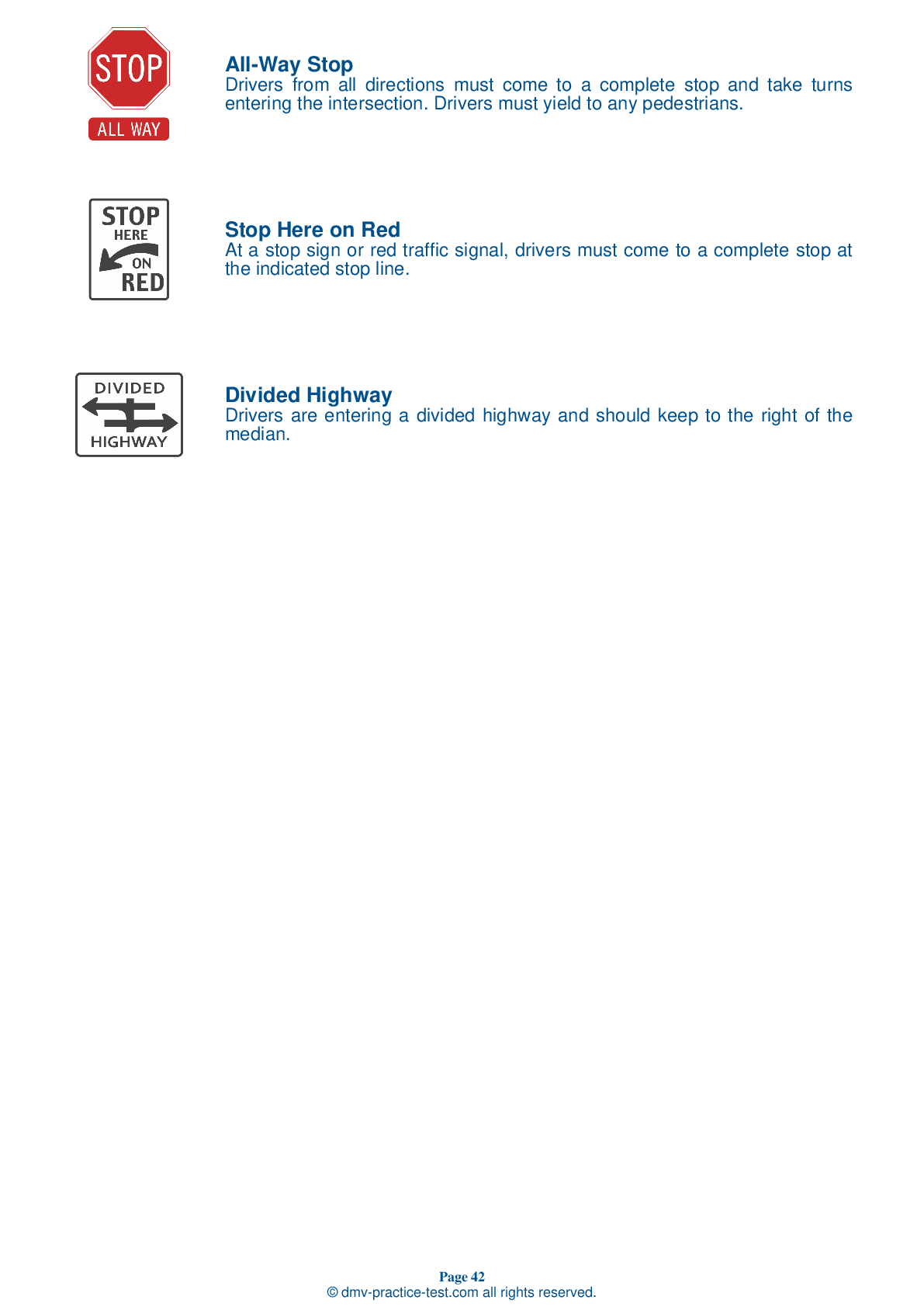FREE Indiana DMV Practice Test #20 Page 2 of 5
This set of Indiana DMV practise tests has been updated for January 2025. It includes questions based on the Indiana Driver Handbook's most significant traffic signals and laws for 2025. Use actual questions that are very similar (often identical!) to the DMV driving permit test and driver's licence exam to study for the DMV driving permit test and driver's licence exam.
On the practise exam, each question gets a tip and explanation to help you remember the concepts. The written component of the official Indiana DMV test will include questions about traffic rules, traffic signs, and driving statutes, as well as information from the Driver Handbook.
To obtain a passing grade, you must correctly answer 44 of the 50 questions. Take our DMV practise exam to help you prepare for your Indiana instruction permit or driver's licence.
The DMV exam is available in several languages.
Using any kind of testing assistance will result in an automatic fail, and the DMV may take additional action against your driver's licence, so stay away from it.
9 . Drinking alcohol and driving is:
Driving while impaired or intoxicated is a serious traffic safety problem. Safe driving is not possible when you drink alcohol or take other drugs. Driving under the influence is dangerous both to you and to others on the road.
10 . While driving on a two-lane road without bicycle lanes, you encounter a bicyclist traveling in the same direction. What is the safest way to pass the bicyclist?
You should pass a bicyclist the same way you would pass any other vehicle, but not so fast or close to them that you throw debris in their face or blow them around with the draft of air from your vehicle. Allow at least 3 feet of space between your side mirror and the bicyclist, or at least 5 feet on higher speed roads or when there is a group of bicyclists. Honking unnecessarily may startle riders and make them more likely to crash.
11 . Pennant-shaped signs indicate:
Pennant-shaped signs usually indicate no passing zones. Text will also be on the sign to confirm that it is a no passing zone.
13 . When you approach a railroad crossing without flashing warning signals or crossing gates, you should:
Always be prepared to yield to any oncoming trains before crossing railroad tracks, particularly if there are no lights or gates controlling the crossing. Never start to cross the tracks until there is room for your entire vehicle on the other side of the tracks. Due to the risk of a vehicle stalling, it is not wise to shift gears when crossing railroad tracks.
14 . This road sign means:

If you drive past these signs, you are going the wrong way and are at risk of a head-on collision. You should cautiously turn around.
15 . At a four-way stop:
At four-way stops, traffic from all four directions must stop. The first vehicle to reach the intersection should move forward first. If two vehicles reach the intersection at the same time, the driver on the left yields to the driver on the right.
16 . Drinking coffee after drinking alcohol:
Drinking coffee will not reduce your blood alcohol concentration (BAC). While it may help you to stay awake, it cannot change your BAC or make you sober.
See the exact questions that will be on the 2025 Indiana DMV exam.
99.2% of people who use the cheat sheet pass the FIRST TIME
LT gives us an insight on how the cheat sheet provided her with all the study questions she needed before taking her test.
Joe initially studied with the handbook and failed his test, he eventually found us online, studied and pass his test the first time around.
